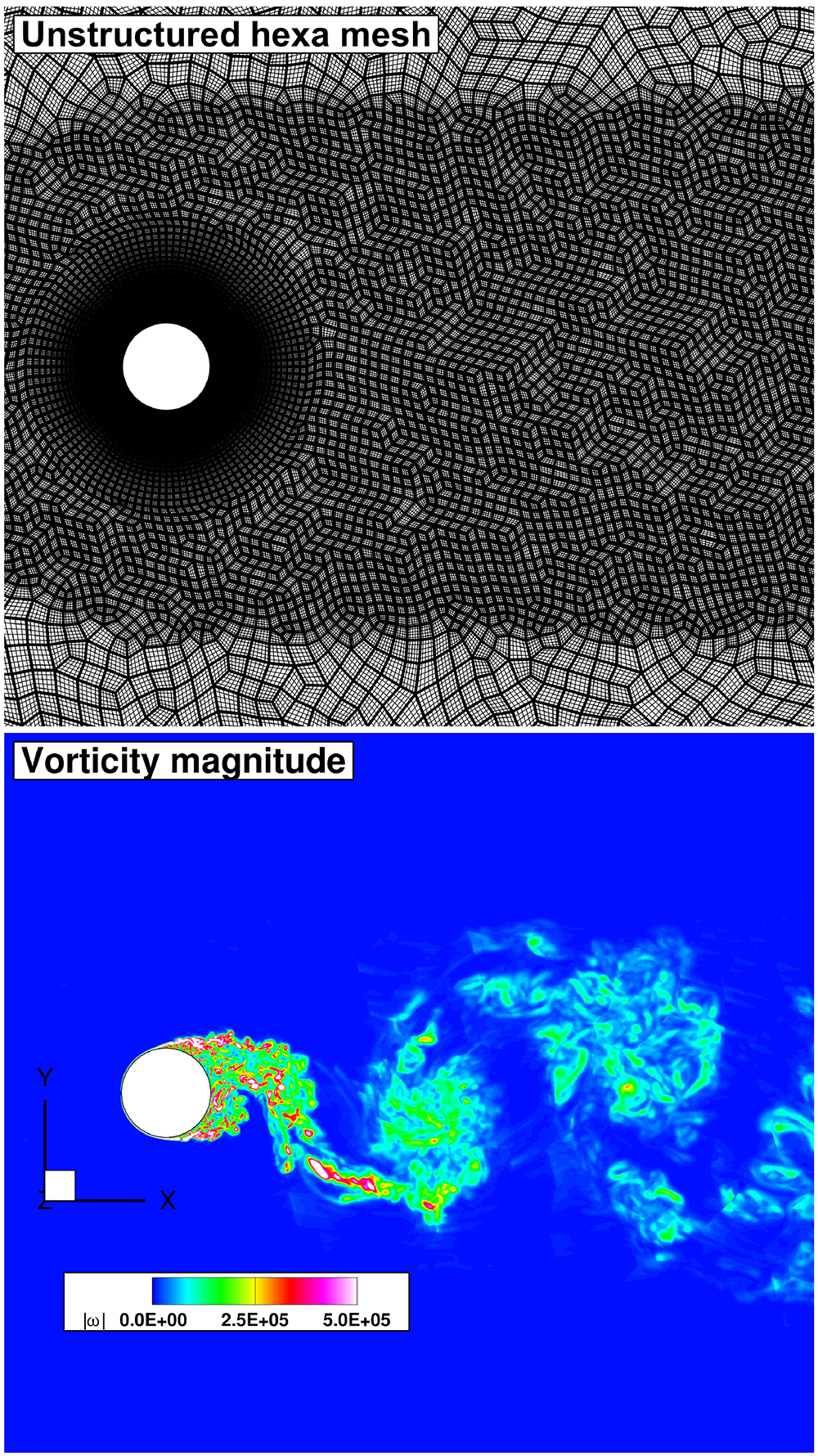Research on numerical simulation techniques for complex flows
JAXA Supercomputer System Annual Report February 2021-January 2022
Report Number: R21EDA201N16
Subject Category: Aeronautical Technology
- Responsible Representative: AOYAMA Takashi, Director, Aviation Technology Directrate, Aircraft Lifecycle Innovation Hub
- Contact Information: MIZOBUCHI Yasuhiro(mizobuchi.yasuhiro@jaxa.jp)
- Members: Hiroyuki Abe, Shingo Matsuyama, Yasuhiro Mizobuchi, Taisuke Nambu
Abstract
Fluid simulation in the aerospace field targets flow fields with turbulence and chemical reactions around aircraft and spacecraft. In addition, simulations of combustors for gas turbine engines and rocket engines sometimes have to deal with complex geometries. This study aims to establish numerical simulation techniques that can analyze such a wide variety of physical phenomena and complex geometries with high accuracy and efficiency.
Reference URL
N/A
Reasons and benefits of using JAXA Supercomputer System
Since turbulence analysis by Direct Numerical Simulation (DNS) and Large Eddy Simulation (LES) is the primary tool in this study, a three-dimensional unsteady analysis must be performed. In addition, governing equations for a large number of chemical species produced by chemical reactions must be solved in the analysis of combustion flows. The computational cost of such an analysis is so high that it is impossible without the use of a supercomputer.
Achievements of the Year
-Unstructured meshes are often used in analyses of complex geometries, but the spatial accuracy of the analysis is generally limited to second-order accuracy. In this study, we proposed a Many-Block method with subcells for higher-order interpolation inside the parent cells, which enables analysis with spatial higher-order accuracy on unstructured meshes. An LES with fifth-order spatial accuracy was performed using unstructured hexahedral mesh for flow around a cylinder at Re=3900.
-Dynamic instability is a problem for atmospheric entry capsules during low Mach number flight. In order to evaluate unsteady aerodynamic characteristics at low Mach number regimes, LES was conducted for a transonic wind tunnel test of a capsule model, and the accuracy of the analysis was validated.
-Turbulent transition of boundary layer in hypersonic flows is still a difficult problem to predict. In order to clarify the mechanism of turbulent transition and to obtain data to construct a prediction model of the turbulent transition that can be used in design, a DNS for turbulent transition in boundary layer on a flat plate at M=5 was conducted.

Fig.1: An example of LES with fifth-order spatial accuracy for flow around a cylinder at Re=3900. (upper) Unstructured hexahedral mesh around a cylinder, and (lower) instantaneous contours of vorticity magnitude.

Fig.2: LES of a capsule model for transonic wind tunnel tests. Pseudo-Schlieren images at (upper) M=0.6, (middle) M=0.95, and (lower) M=1.4.

Fig.3: DNS for turbulent transition in boundary layer on a flat plate at M=5. (Top) Turbulent transition visualized by eddy structure. (Bottom) Close-up view of eddy structure near the transition location. The eddy structures in the figures are show by isosurfaces of the second invariant of the velocity gradient tensor colored with Mach number.
Publications
- Non peer-reviewed papers
[1] Proceedings of the 2nd Workshop on Cartesian Grid-based CFD, JAXA-SP-21-009, 2022.
- Oral Presentations
[1] Shingo Matsuyama, "LES of Turbulent Spray Combustion with Detailed Reaction Model," The 59th Symposium (Japanese) on Combustion.
[2] Shingo MATSUYAMA, Yuki TAKEDA, Kazuyuki UENO, Ryoji TAKAKI, Daisuke SASAKI, Shun TAKAHASHI, Keisuke SUGAYA and Taro IMAMURA, "Efforts to Improve Methodology of Cartesian Grid CFD through Workshops," the 35th Computational Fluid Dynamics Symposium, 2021.
[3] Shingo Matsuyama, Makoto Kojima, Yoshio Nunome, Hideyuki Tanno, Hideto Kawashima, and Toshiharu Mizukaki, "CFD Analysis of a Rotating Detonation Combustor with a Non-premixed CH4/O2 Injection," the 61st Conference on Aerospace Propulsion and Power, 2022.
Usage of JSS
Computational Information
- Process Parallelization Methods: MPI
- Thread Parallelization Methods: OpenMP
- Number of Processes: 64 - 1664
- Elapsed Time per Case: 120 Hour(s)
JSS3 Resources Used
Fraction of Usage in Total Resources*1(%): 0.45
Details
Please refer to System Configuration of JSS3 for the system configuration and major specifications of JSS3.
| System Name | CPU Resources Used(Core x Hours) | Fraction of Usage*2(%) |
|---|---|---|
| TOKI-SORA | 10613142.93 | 0.52 |
| TOKI-ST | 24238.33 | 0.03 |
| TOKI-GP | 0.00 | 0.00 |
| TOKI-XM | 0.00 | 0.00 |
| TOKI-LM | 804.28 | 0.06 |
| TOKI-TST | 0.00 | 0.00 |
| TOKI-TGP | 0.00 | 0.00 |
| TOKI-TLM | 0.00 | 0.00 |
| File System Name | Storage Assigned(GiB) | Fraction of Usage*2(%) |
|---|---|---|
| /home | 245.06 | 0.24 |
| /data and /data2 | 16981.33 | 0.18 |
| /ssd | 1369.39 | 0.35 |
| Archiver Name | Storage Used(TiB) | Fraction of Usage*2(%) |
|---|---|---|
| J-SPACE | 55.17 | 0.37 |
*1: Fraction of Usage in Total Resources: Weighted average of three resource types (Computing, File System, and Archiver).
*2: Fraction of Usage:Percentage of usage relative to each resource used in one year.
ISV Software Licenses Used
| ISV Software Licenses Used(Hours) | Fraction of Usage*2(%) | |
|---|---|---|
| ISV Software Licenses(Total) | 267.17 | 0.19 |
*2: Fraction of Usage:Percentage of usage relative to each resource used in one year.
JAXA Supercomputer System Annual Report February 2021-January 2022


